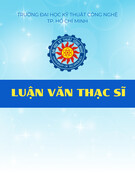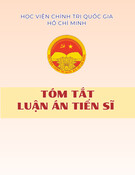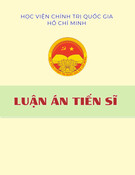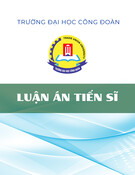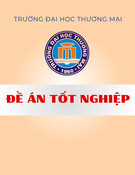
IV
TABLE OF CONTENTS
DECLARATION......................................................................................................................... I
ACKNOWLEDGEMENTS.......................................................................................................II
TABLE OF CONTENTS......................................................................................................... IV
LIST OF TABLES, FIGURES & DIAGRAMS ...................................................................VII
ABSTRACT .................................................................................................................................1
CHAPTER ONE A STORY OF THREE GENERATIONS ...................................................3
1.0 INTRODUCTION .........................................................................................................................................3
1.1 BACKGROUND...........................................................................................................................................4
1.2 RATIONALE FOR UNDERTAKING THIS RESEARCH ....................................................................................5
1.3 RESEARCH DESIGN ...................................................................................................................................6
1.4 APPROACH ................................................................................................................................................7
1.5 SCOPE OF THE RESEARCH .........................................................................................................................7
1.5.1 Victoria at a Glance...............................................................................................................................8
1.6 SIGNIFICANCE OF THE RESEARCH.............................................................................................................9
1.7 STRUCTURE OF THE THESIS ....................................................................................................................10
CHAPTER TWO UNDERSTANDING GENERATIONS....................................................12
2.0 INTRODUCTION .......................................................................................................................................12
2.1 THE CONCEPT OF GENERATIONAL COHORTS .........................................................................................13
2.1.1 The Value of Generational Cohorts..............................................................................................14
2.1.2 The Generations...........................................................................................................................19
2.2 CHARACTERISTICS OF THE GENERATIONS..............................................................................................20
2.2.1 Baby Boomer Generation .............................................................................................................21
2.2.2 Generation X.................................................................................................................................22
2.2.3 Generation Y ................................................................................................................................24
2.3 RECENT STUDIES ON GENERATIONS AT WORK ......................................................................................27
2.4 WHAT DOES THIS MEAN FOR MODERN WORKPLACES? ........................................................................31
2.5 CONCLUSION...........................................................................................................................................32
CHAPTER THREE THE CHANGING NATURE OF WORK ...........................................34
3.0 INTRODUCTION .......................................................................................................................................34
3.1 THE S.E.T MODEL ..................................................................................................................................34
3.2 DOMINANT TRENDS INFLUENCING THE WORK ENVIRONMENT ......................................36
3.2.1 The Pace of Change in the Workplace ........................................................................................37
3.2.2 Globalisation ................................................................................................................................40
3.2.3 Technology at Work ...................................................................................................................41
3.2.4 Communication at Work..............................................................................................................43
3.2.5 Changing Demographics – the Ageing Population.....................................................................44
3.2.6 LABOUR SHORTAGE ...............................................................................................................46
3.3THE CHANGING WORKPLACE CULTURE .................................................................................................48
3.3.1 Working Styles..............................................................................................................................49
3.3.2 Increased Female Participation Rate ............................................................................................51
3.3.3 The Deal Breakers - Attraction, Retention and Engagement.......................................................52
3.3.4 Employee Attraction: ‘Attractive to Whom’? ............................................................................53
3.3.5 Employee Engagement –‘Challenge Me, Motivate Me, Value Me!’.........................................54
3.3.6 Career Progression .......................................................................................................................56
3.3.7 Training and Life-Long Learning................................................................................................57
3.3.8 Retention: ‘You’re a High Potential Employee - You Can’t Leave!’ .........................................59
3.3.9 Organisational Loyalty –‘What’s That?’.....................................................................................60
3.3.10 Work/Life Balance......................................................................................................................61
3.4 CONCLUSION...........................................................................................................................................65
CHAPTER FOUR METHODOLOGY...................................................................................67
4.0 INTRODUCTION .......................................................................................................................................67
4.1 RESEARCH AIMS AND QUESTIONS..........................................................................................................67






